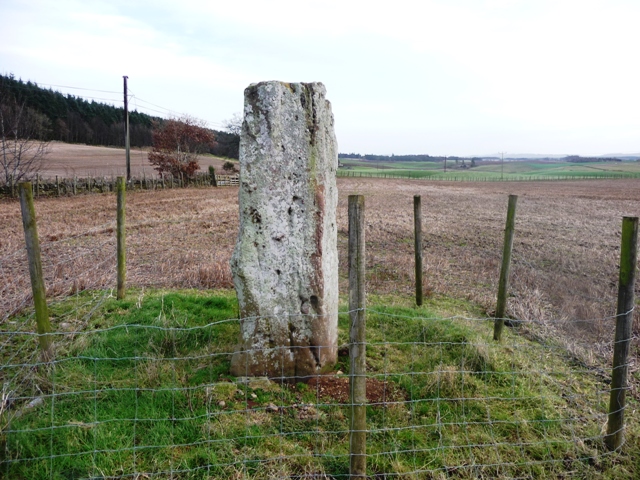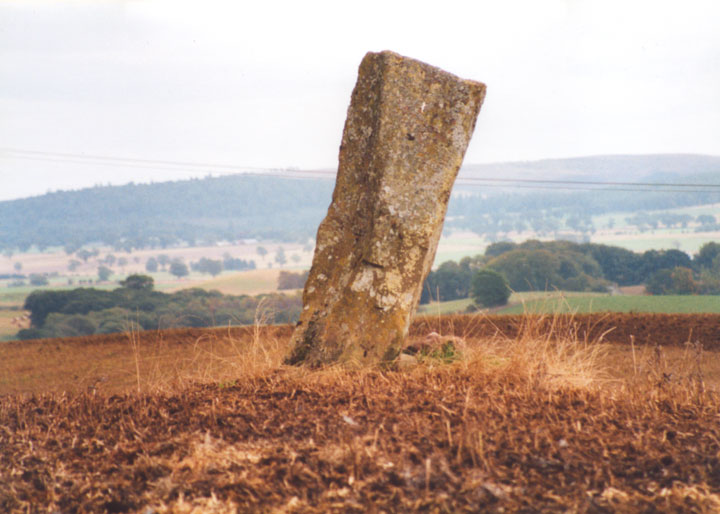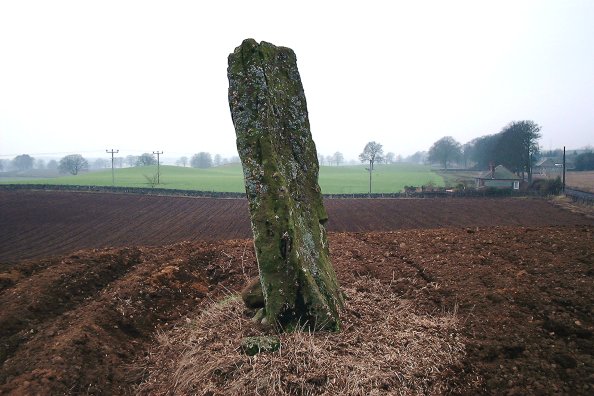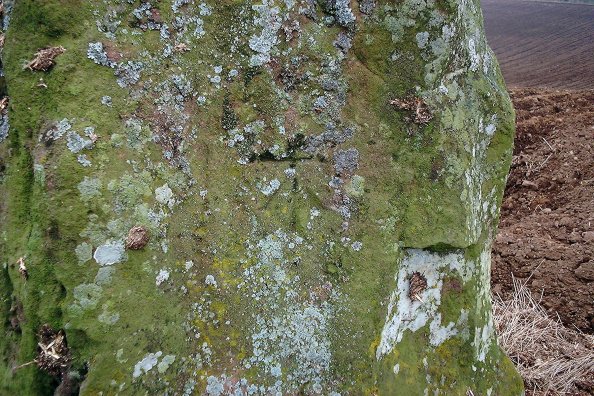





Now with added fence.











looking west

South face looking north

Showing the bench-mark on the northern face


looking south

looking east, outlined against the horizon
A 4000-year-old standing stone in Angus has fallen over due to severe winter weather.
The Carlinwell stone at Airlie, near Kirriemuir, toppled over as the snow, ice and frost from the long cold spell melted away.
The 7ft prehistoric unsculptured standing stone is situated on the crest of a knoll on a farm. Human remains were found underneath the scheduled monument at the end of the 18th century. It is one of a number of standing stones across the country.
Historic Scotland is now looking to carry out an investigative dig of the site, before reinstating the stone.
A spokeswoman said: “Carlinwell standing stone is a scheduled monument near Airlie, Angus.
“The stone fell over a couple of weeks ago when this winter’s heavy frost finally thawed. We were contacted by the landowner and had a meeting with him on Friday.
“Fortunately the stone was not damaged in any way and the owner has cordoned the stone off to protect it from grazing stock.
“Prehistoric standing stones such as this commonly have relatively shallow footings and two thousand years of soil erosion can result in instability. We will be investigating options for reinstating the stone.
“Historic Scotland is hoping to arrange for archaeological excavation around the base of the standing stone followed by its re-instatement.”
news.stv.tv/scotland/tayside/225279-prehistoric-standing-stone-falls-over/
I parked at the Airlie village hall and walked back east along the A926 jumping the fence near the stone. The stone has been put back up, has had some field clearance/chokes removed and now has a nice fence surrounding it. Nice setting to restart with.
Visited 23/12/2014.
This stone is situated near Alyth. Taking the A926 east from Alyth, through Ruthven and the village of Airlie, it is immediately visible to the right, highlighted against the sky. There is a convenient farm gate nearby, which can be parked in short term. The stone is over 2 metres high, and has no normal distinguishing marks (If you disregard the ruddy great bench-mark on the northern face...), but is quite dramatic as it leans to the south, illustrated in the picture I have posted.





































































































































































